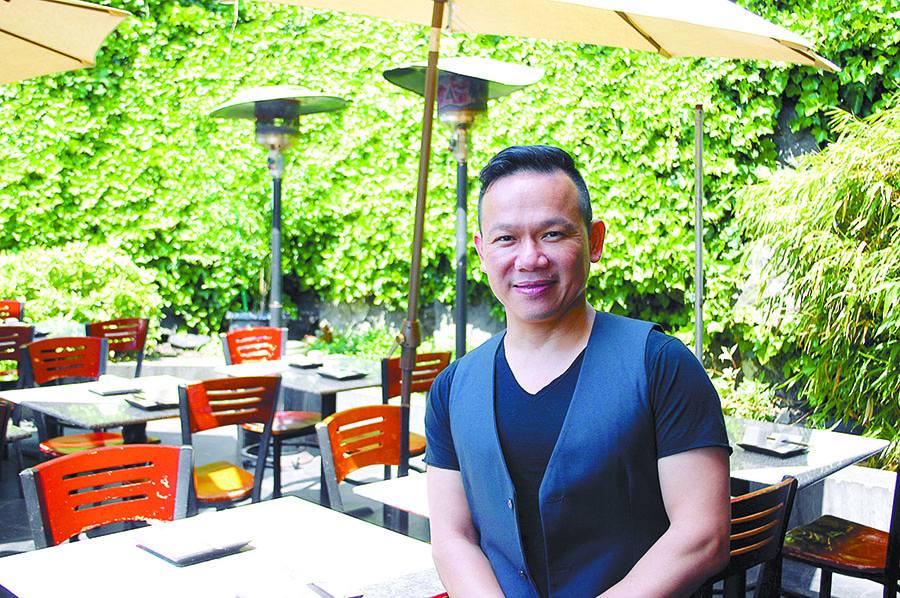At your next cocktail party, when talk turns to Seattle’s drawbridges, as it inevitably will, you might mention that the Fremont Bridge, since its christening on a warm mid-June morning 97 years ago, has as of last week traveled up and down 652,444 times. When they beg for more, their minds blown by your span of knowledge, let it spill that the double-leaf bascule bridge spreads its wings for marine traffic an average of 35 times a day, opening at an angle of 74 degrees from horizontal, and that the average length of time the bridge is in an upward position is 4.9 minutes. On a Seafair Sunday, the most hectic day of the year, the bridge will rise 34 times during an eight-hour period—about every 14 minutes—creating maddening gridlock while pleasure craft, a mere 30 feet below, gingerly make their way (taunting us, it seems) under the structure.
On a recent afternoon, Joe Grande, the Seattle Department of Transportation’s bridge crew chief for 15 years, gazes down on the brackish waters of the Ship Canal. He’s in the control room, a rectangular nook the size of a small college dorm room, perched 25 feet above the most frequently opened drawbridge in the country, built in 1917 at a cost of $410,000. Traffic on the waterway is light this day: a few kayakers skittering toward Puget Sound, a sailboat with a striped red- and-blue spinnaker, a trudging fishing charter the color of clay.
A ruddy-faced 65-year-old with steel-blue eyes and a thatch of graying hair, Grande concedes that bridge openings try the patience of many a motorist. “We’ll get that hand gesture,” he says with a smile. “We just ignore them. That’s part of the training, to ignore them. Anyway, we have a lot of water here, so what are you going to do? This is just one of the things that make Seattle Seattle.”
Besides, federal law stipulates that marine traffic is allowed the right of way. The U.S. Coast Guard makes the rules, and—aside from the rush-hour periods on weekdays from 7 to 9 a.m. and 4 to 6 p.m., when the bridge remains closed to all boaters and commercial fishing vessels—a solitary sailor takes precedence over a poor, harried schmuck in a Subaru, even if traffic is backed up from here to eternity.
“If I got someone laying on his back with a toothpick in his mouth and they call in for an opening, I got to open the bridge for them,” notes Grande. “I can hold them for 10 minutes, but then we got to open the bridge.”
Asked if things don’t get a trifle monotonous and downright dull for the 20 bridge operators who man the Ballard, Spokane, and Fremont bridges for SDOT, Grande says with a wink, “Bridge operators are probably the best-read people in the country. They read an awful lot of books.”
And, he adds, “It may get boring, but you know, you have a four-corner office with windows all around. But if you want to get a beautiful sunset, you want to be on Ballard Bridge.”
Operators work a straight eight-hour shift—no breaks, no meals, and no one had better leave the tower, even during those rush-hour hiatuses, other than to administer daily grease jobs to the rack bars and fittings, gears, and bearings, many of which are original parts and have never been replaced.
“We had one that would sneak out for a sandwich or something and not tell anyone,” Grande recalls, “but he’s no longer working here.”
The towers are staffed 16 hours every day, from 7 a.m. to 11 p.m.; after that, a call-out operator shuttles among the bridges to open them for late- and wee-hour boat traffic.
“This job requires a lot of patience, a lot of patience,” says Grande. “Just because I push the button that triggers the red light, that doesn’t mean traffic will stop. You got to do your own visuals, check on the cameras that are right up there—see them?—that give you pictures of under and around the bridge. Yeah, and sometimes the bridge will stick open, usually because of an electrical problem. The longest one that I know of on the Fremont Bridge was around 43 or 45 minutes.”
Grande says the old bridge will be repainted later this year, the same blue and orange that Fremont Fair-goers chose back in 1984. “It’ll probably take a couple a months or so, but it needs it.”
Watching the bridge recline, he expounds, “We don’t get the jumpers like we used to, you know, the ones who’ll make the jump to cool off on a summer day. When they did jump, we prayed they’d take a good shower. God knows what’s in that water. Some of them, I remember, would find a spot in the girders and ride the bridge up. Better than an E-ticket, I guess, but hey, that’s kind of dangerous.”
Later he playfully asks, “How many pigeons did we catch today?” Indeed, the critters are a nuisance. They can wreak havoc with the machinery, gum up the works, says Grande—hence the classical music.
“Come on, let’s go under the bridge,” he commands. Down several flights of very narrow stairs, we emerge in semi-darkness. The bridge shudders from the rumble of cars above. “See where the greasing has been done? You got to do it every day. See that—it’s like a giant shock absorber. Amazing, huh?
“OK, now listen. Do you hear the music? That’s coming from the radios we’ve put in here. They’re tuned to classical music. We started this three months ago. They say the pigeons hate it, and it will get rid of them. I don’t know, maybe it will. We’ll see.” E
econklin@seattleweekly.com








